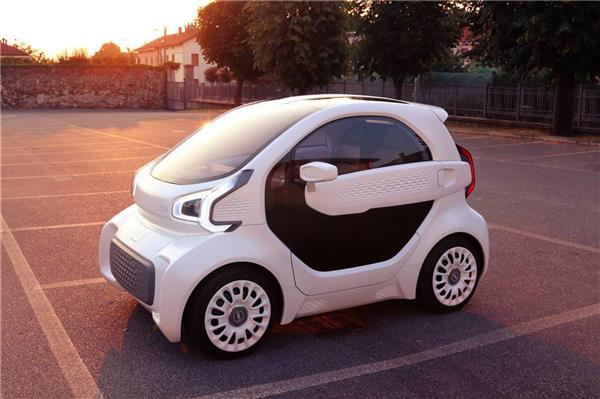Italian company X Electrical Vehicle (XEV) says its 3D printed electric car, the LSEV, will be ready for mass production by the end of the year. The first 3D printed LSEV car is currently being demonstrated at Shanghai’s China 3D Printing Cultural Museum.
The development and production of 3D printed cars is an exciting (if slightly controversial) use of additive manufacturing. To date, we’ve seen cool 3D printed vehicles from the likes of Local Motors, Divergent Microfactories, and others, though only a handful of companies have a 3D printed car worthy of mass production.
If recent reports are to be believed, one of those companies is Italy’s XEV, whose 3D printed LSEV electric car is currently being showcased at the China 3D Printing Cultural Museum in Shanghai.
This exhibition is a kind of pre-event for XEV’s demonstration at Auto China 2018 in Beijing, where numerous attendees will get the chance to see the company’s almost entirely 3D printed electric vehicle. Apart from the chassis, seats, and glass, all visible parts of the car will be 3D printed. (The mechanical stuff, perhaps unsurprisingly, will not be.)
Most excitingly, this compact 3D printed car—it weighs just 450 kg—is purportedly just about ready for production, which will start at the end of 2018.
XEV says it has already received around 7,000 preorders for its 3D printed vehicle, and plans to make the electric car fully available for purchase in the second quarter of 2019. Preorder customers include the Italian National Post Service and car rental company ARVAL.
The quick time-to-market for the LSEV car is mostly thanks to 3D printing: by using additive manufacturing technologies, investments costs were reportedly reduced by around 70 percent, allowing XEV to work at a fast rate without waiting for funding, while the total number of components in the car decreased from more than 2,000 to just 57.
“The research and development process of a car model conventionally takes between three to five years, but 3D printed cars like XEV only take between three months to 12 months,” explained Luo Xiaofan, founder and CEO of Polymaker, a Shanghai-based technology company responsible for material R&D for the 3D printed electric vehicle.
Excited about the possibility of getting a 3D printed electric car next April? We would be too, but we’re slightly confused by the mysterious XEV, which doesn’t seem to have any internet presence whatsoever. Perhaps Auto China 2018 will shed some light on the 3D printed electric car project.

























